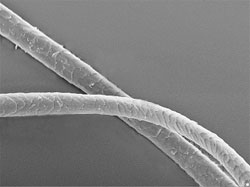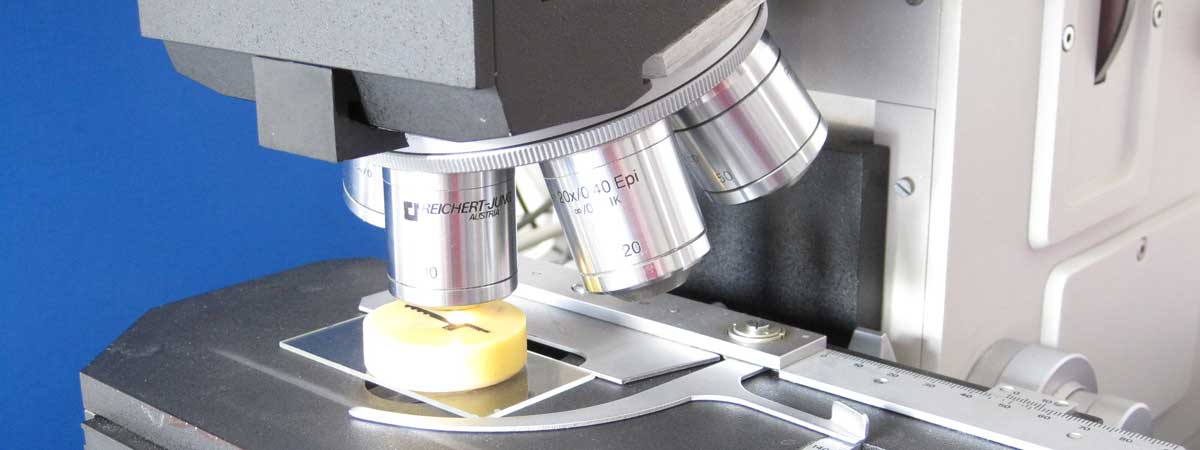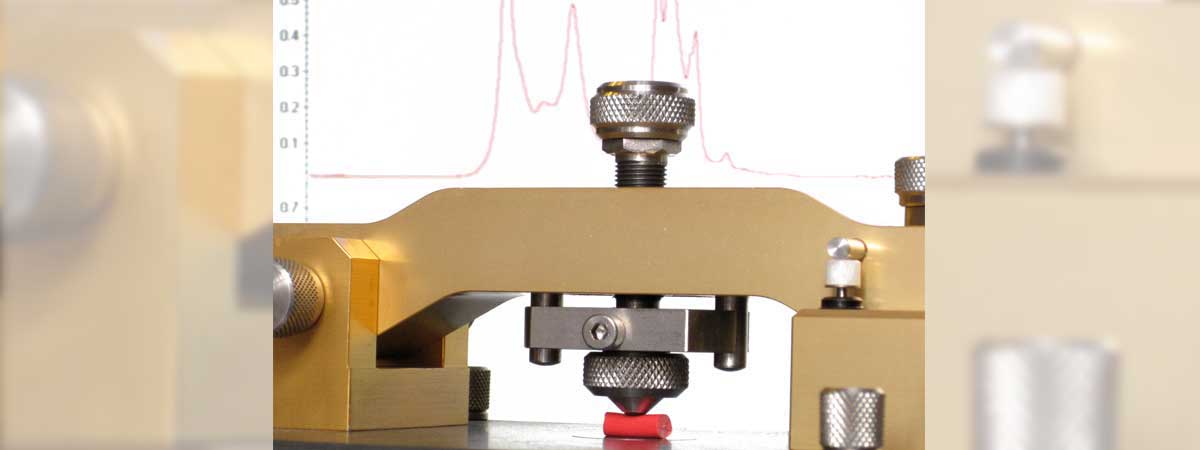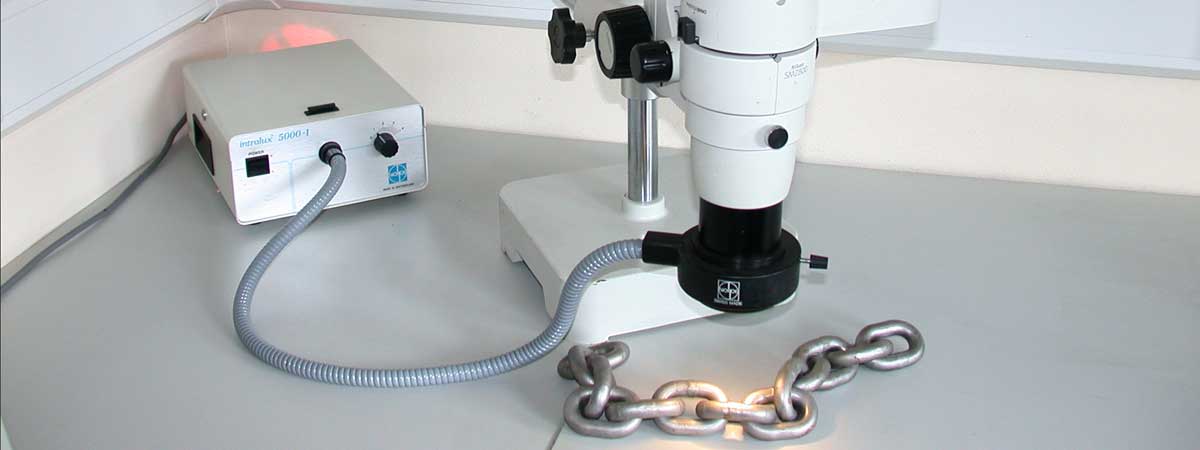FIBRE IDENTIFICATION
Various techniques are used to identify textile and engineering fibres including optical and electron microscopy, thermal characteristics, density measurement and chemical tests.

Interwoven metal fibres

Wool fibres

Glass fibres

X-ray spectrum of glass fibres
Microscopy / Fibre Diameter and Morphology
Scanning Electron Microscopy (SEM) / EDS and optical microscopy provide information on the physical and chemical nature of the fibre. Many fibres can be identified from examination of the fibre surface morphology and cross-section, for example animal fibres tend to exhibit scale margins whereas smooth profiles indicate man-made fibres or silk. This information together with the chemical nature of the fibre is often sufficient to identify the fibre.
Melting point / Thermal Characteristics
This is measured using differential scanning calorimetry, which measures the energy absorbed or liberated as a sample is heated up and undergoes thermal transitions. The endothermic and exothermic changes observed are reproducible and uniquely characteristic for a given material so the DSC spectrum gives a "fingerprint" used to identify natural and synthetic fibres and blends.
Chemical
- Chemical Composition
- Fourier transform infra-red spectroscopy provides information on the type of chemical bonds within a sample and hence the identity of the fibre
- Elemental Analysis
- In addition to FTIR, the presence of chlorine and nitrogen can be used to distinguish fibres such as nylon and polyurethane which contain nitrogen, from those where nitrogen is absent, such as acetate and polyester.
- Halogen test
- Scanning Electron Microscopy (SEM) / EDS can be used to detect halogens
- The Beilstein test is an alternative method for detecting halogens involving determination of the colour of a flame on a hot copper wire.
- Test for Nitrogen
- Soda Lime test. The fibre to be identified is mixed with soda lime and gas liberated determined.




